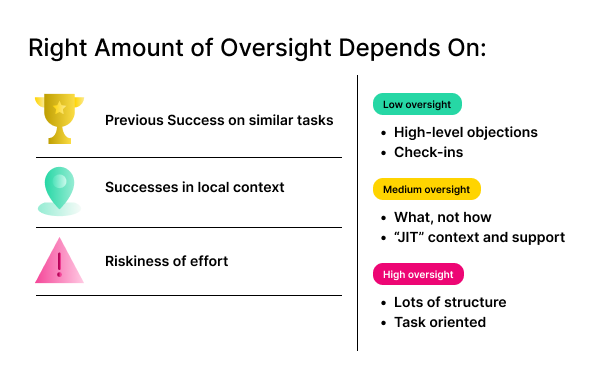Throwing a pizza party isn’t what effective team management is about.
Hi y’all,
I’m fresh off the ARA Women in Rental conference, where I had great conversations with many of you. Something that came up a lot was the topic of managing teams.
One book that Goodshuffle leaders use as a guidebook for growing and scaling our team is No Rules Rules, which is written by the founders of Netflix. Some of the advice in there may shock you, but I’d encourage you to give it a read (or listen) nonetheless. It’ll certainly challenge some of your beliefs surrounding leadership.
In the meantime, here are a few of the leadership lessons I’ve learned firsthand:
1. Take ownership when you could have done a better job
Literally anything that’s ever gone wrong on an event for me has been due to a mismanagement of expectations.
One of the strategies I’ve deployed as a manager is “falling on my sword” when things go wrong. If something doesn’t go to plan, I try to lean into the assumption: “I must not have given you enough information to meet my expectations.”
It’s amazing how much more open my teams have gotten when I use this approach and how readily they’ll take ownership of their role in any mistakes.
2. Hold your team accountable…but recognize them, too
If you have set clear expectations, it’s important to hold your team accountable when things go wrong, but maybe even more important to recognize them when things go right.
Now, here’s where a lot of leaders go wrong: they don’t give recognition in the right way. Not everyone values a pizza party or shoutout in front of the whole team. Others won’t feel valued unless they get that public recognition.
Have a conversation with each of your team members and ensure you understand how they feel appreciated — and how they prefer to receive feedback.
3. Give your team autonomy to innovate
If someone suggests a faster approach to loading event equipment or reorganizing the warehouse, let them run with it. In an industry where creativity can lead to efficiency, giving employees room to experiment builds both confidence and results.
Giving your team the autonomy to innovate has everything to do with selecting the right people. How do you know who the “right” teammates are? It’s contextual, for sure, but being able to recognize an individual’s task-relevant maturity (read more here) is key.

With how fast-paced event work is, how demanding the timelines can be, and how high client expectations are, leaders need strategies to keep teams motivated and operations smooth. What else has worked for you?
See you next Tuesday,
Mallory Mullen
Goodshuffle










